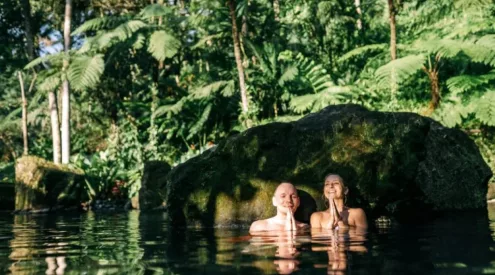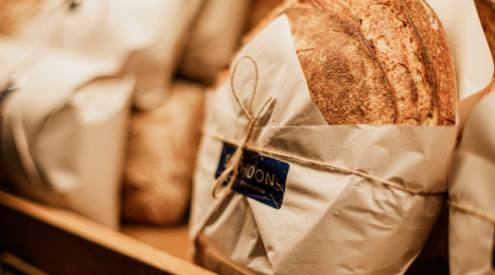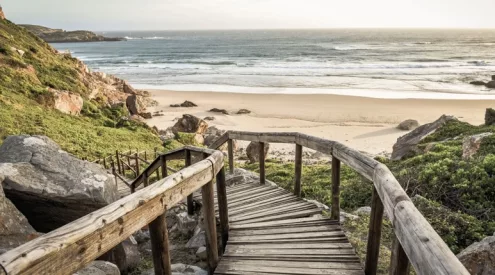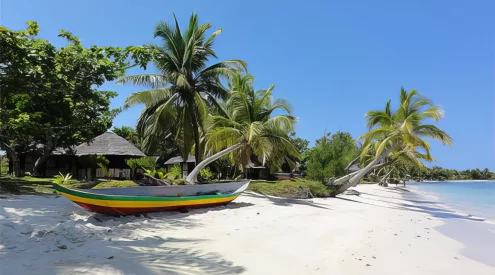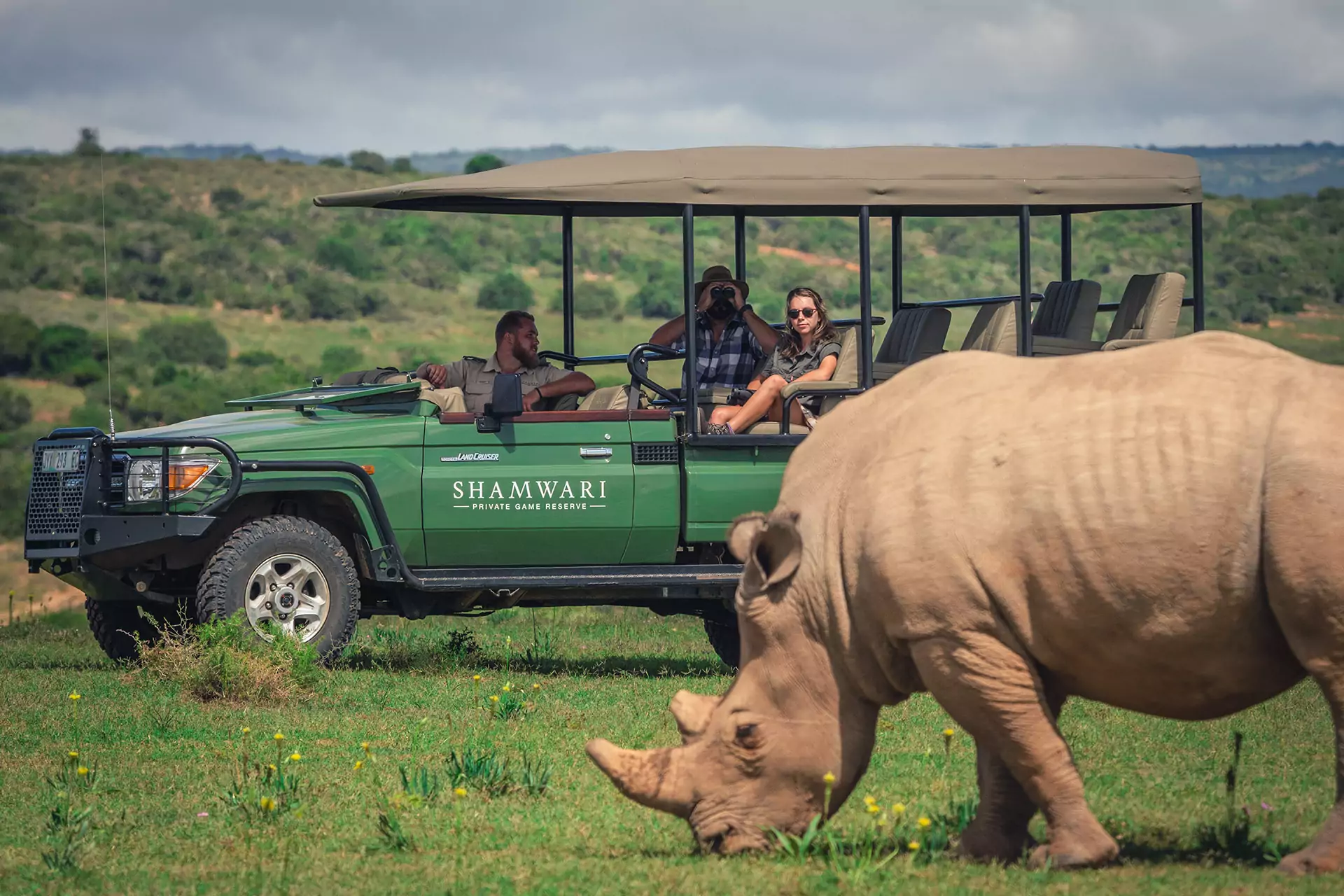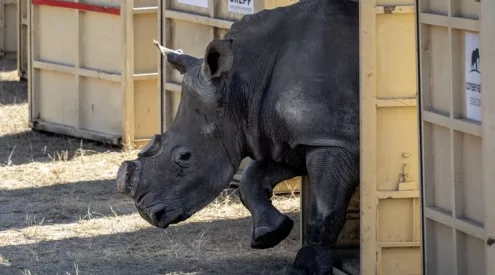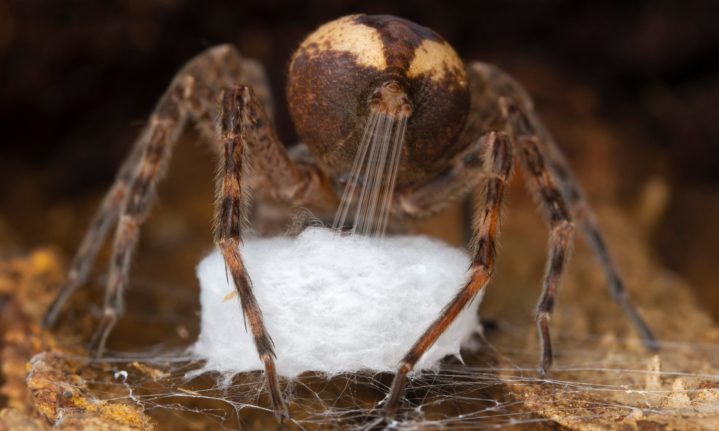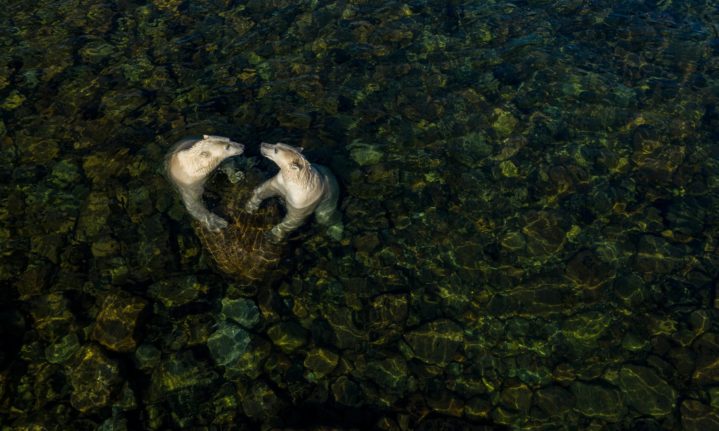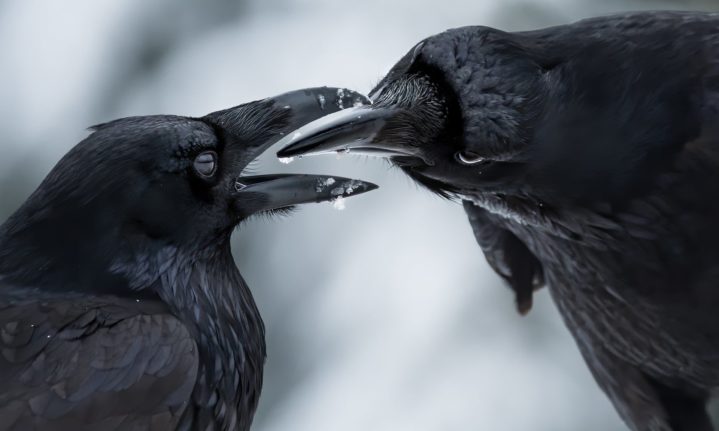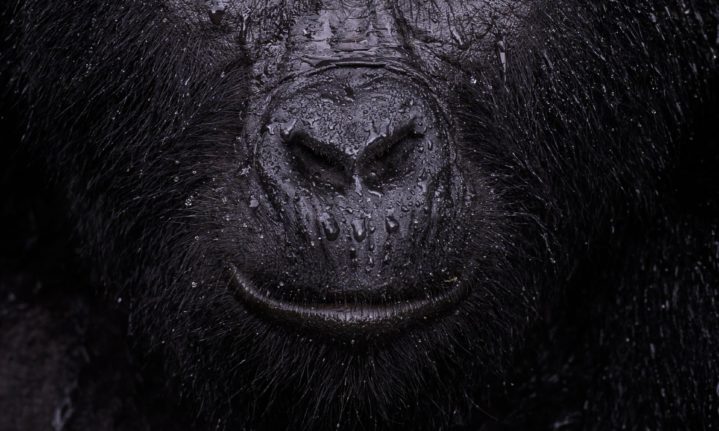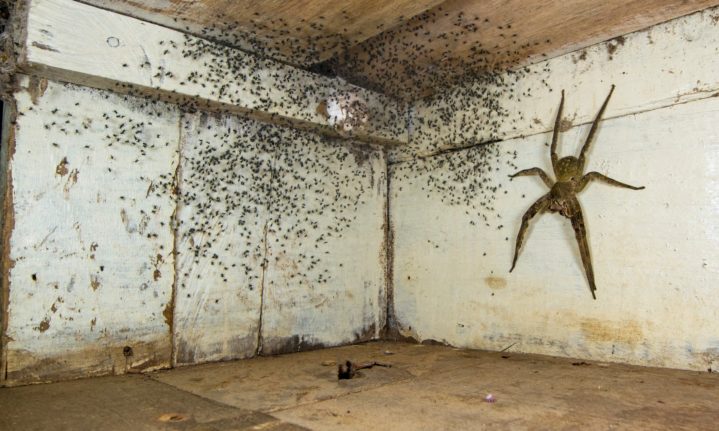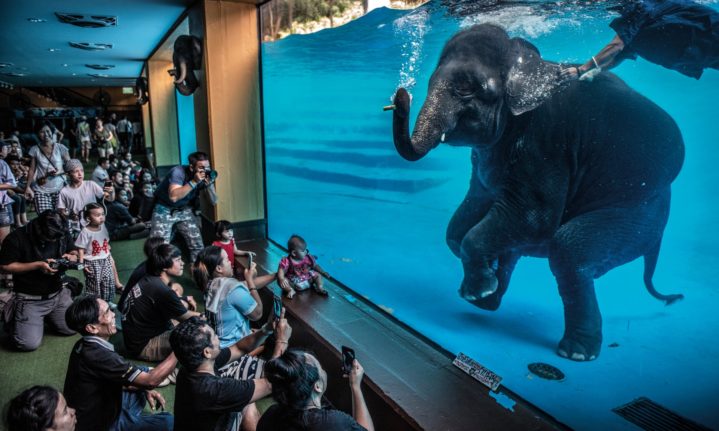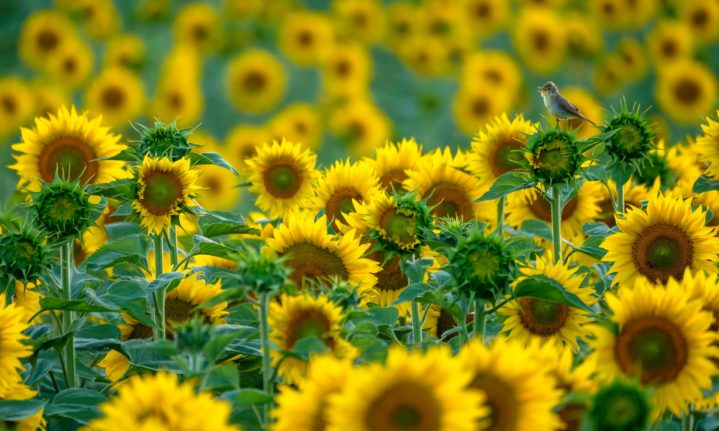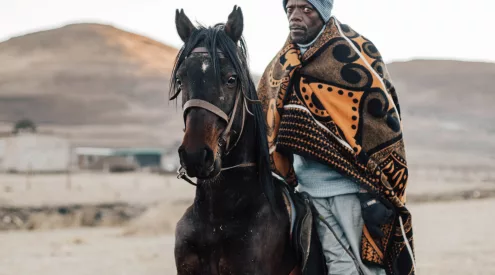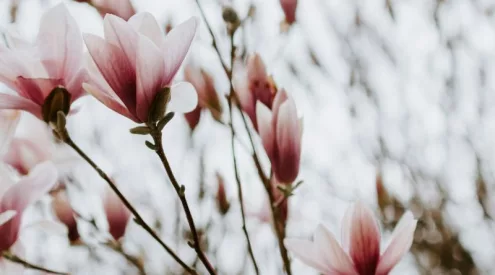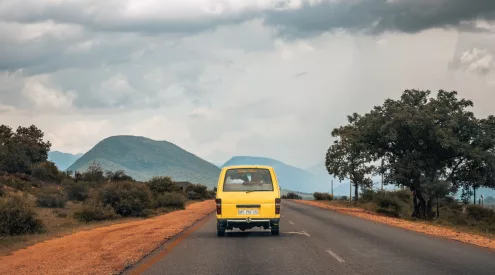Selected from more than 50 000 entries across 96 countries, the winners of the Natural History Museum’s Wildlife Photographer of the Year competition have been revealed.
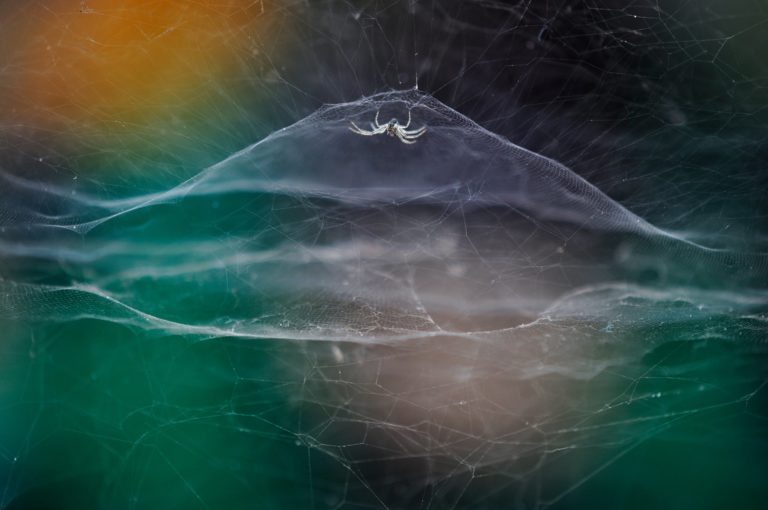
Winner, 10 years and under. Dome home, by Vidyun R Hebbar, India. Vidyun watches a tent spider as a tuk-tuk passes by. Exploring his local theme park, he found an occupied spider’s web in a gap in a wall. The tuk-tuk provided a backdrop of rainbow colours to set off the spider’s silk creation. Tent spiders are tiny – this one had legs spanning less than 15mm.
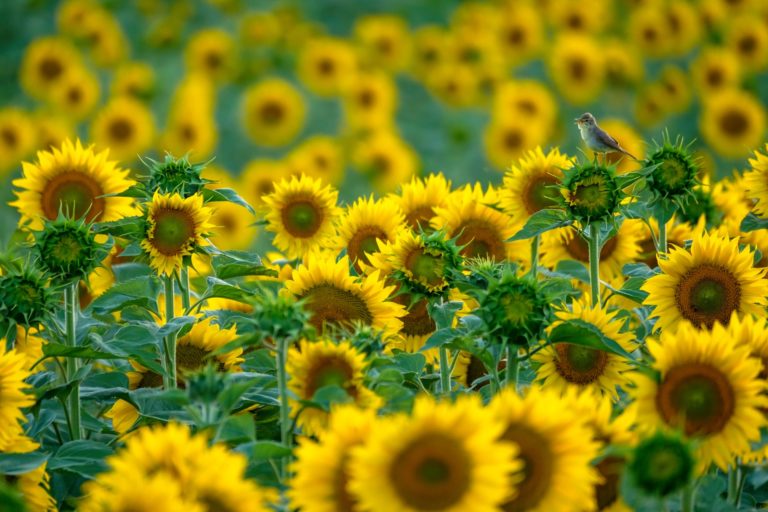
Winner, 11-14 years. Sunflower songbird, by Andrés Luis Dominguez Blanco, Spain. As the light faded at the end of a warm May afternoon, Andrés’ attention was drawn to a warbler flitting from flower to flower.
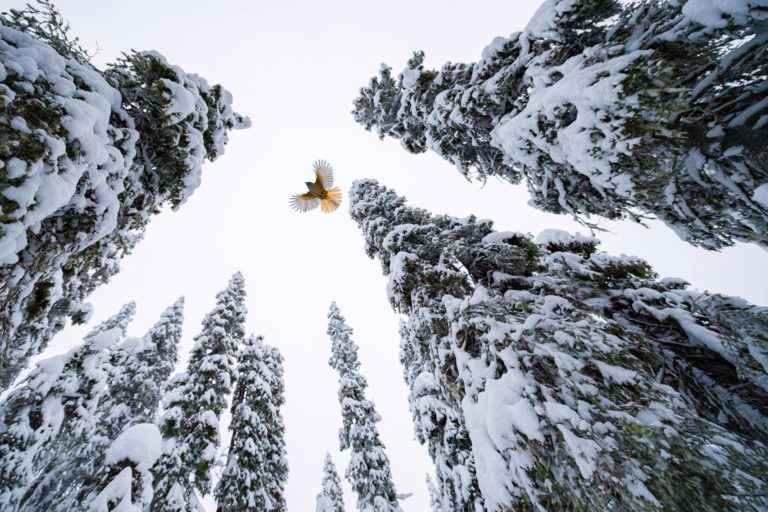
Winner, 15-17 years. High-flying jay, by Lasse Kurkela, Finland. A Siberian jay flies to the top of a spruce tree to stash its food. Lasse wanted to give a sense of scale in his photograph of the jay, tiny among the spruce. He used pieces of cheese to get the jays accustomed to his remotely controlled camera and to encourage them along a particular flight path.
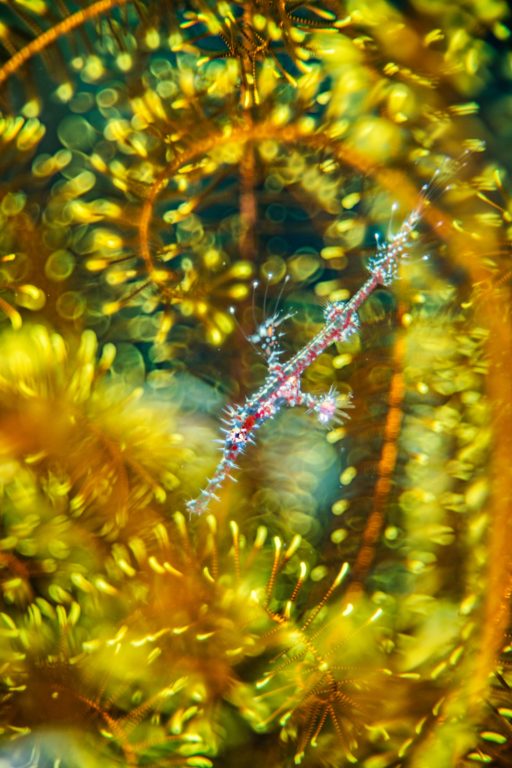
Winner, natural artistry Bedazzled, by Alex Mustard, UK. A ghost pipefish hides among the arms of a feather star. Mustard had always wanted to capture this image of a juvenile ghost pipefish, but usually only found darker adults on matching feather stars.
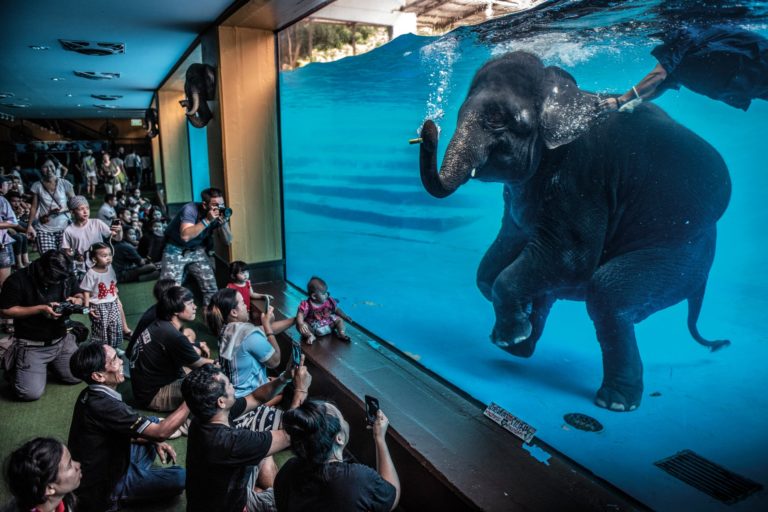
Winner, photojournalism. Elephant in the room, by Adam Oswell, Australia Zoo. Visitors watch a young elephant performing underwater. Oswell was disturbed by this scene, and organisations concerned with the welfare of captive elephants say performances like this encourage unnatural behaviour.
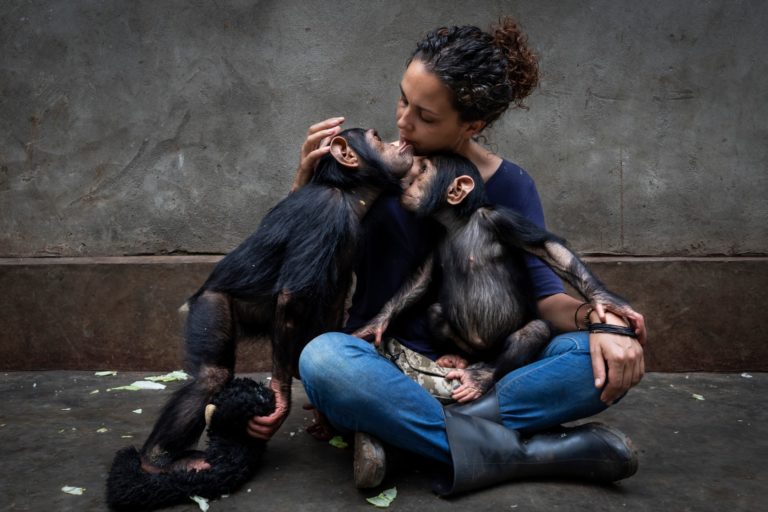
Winner, photojournalist story award. The healing touch, from community care, by Brent Stirton, South Africa. The director of the Lwiro Primate Rehabilitation Centre, in Kinshasa, cuddles a chimp orphaned by the bushmeat trade. Young chimps are given one-to-one care to ease their psychological and physical trauma. These chimps are lucky, as fewer than one in 10 orphans are rescued.
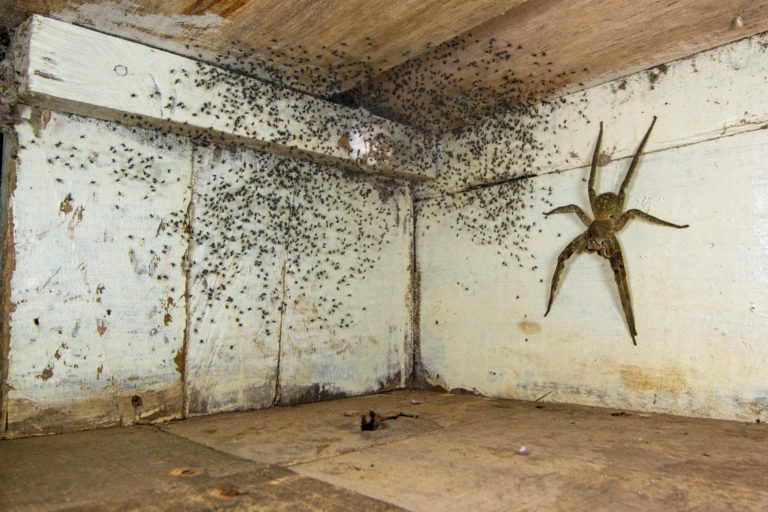
Winner, urban wildlife The spider room, by Gil Wizen, Israel/Canada Wizen found one of the world’s most venomous spiders, a Brazilian wandering spider, guarding its brood under his bed. Before safely moving it outdoors he photographed the human-hand-sized spider, using forced perspective to make it appear even larger.

Winner, oceans: the bigger picture. Nursery meltdown, by Jennifer Hayes, US Hayes records harp seals, seal pups and the blood of birth against melting sea ice. After a storm, it took hours of searching by helicopter to find this fractured sea ice used as a birthing platform by harp seals.

Winner, wetlands: the bigger picture. Road to Ruin, by Javier Lafuente, Spain A stark, straight line of road slices through the curves of the wetland landscape. By manoeuvring his drone and inclining the camera, Lafuente dealt with the challenges of sunlight reflected by the water and ever-changing light conditions. Dividing the wetland in two, this road was constructed in the 1980s to provide access to a beach.

Winner, portfolio award Face-off, from Cichlids of Planet Tanganyika, by Angel Fitor, Spain Two male cichlid fish fight over a snail shell in Lake Tanganyika. Inside the half-buried shell is a female ready to lay eggs. For three weeks, Fitor monitored the lake bed looking for such disputes. The biting and pushing last until the weaker fish gives way.
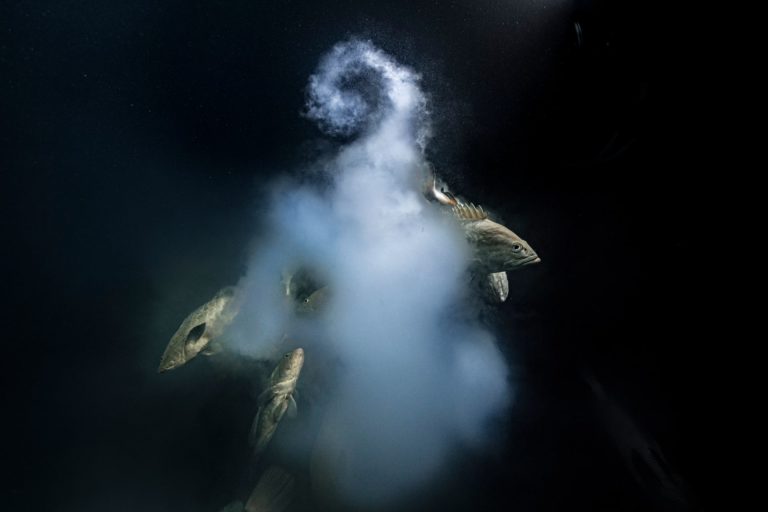
Winner, underwater. Creation, by Laurent Ballesta, France A trio of camouflage groupers leaves a milky cloud of eggs and sperm. For five years, Ballesta and his team returned to this lagoon, diving day and night to see the annual spawning of camouflage groupers. They were joined after dark by reef sharks hunting the fish. Spawning happens around the full moon in July, when up to 20,000 fish gather in Fakarava in a narrow, southern channel linking the lagoon with the ocean.
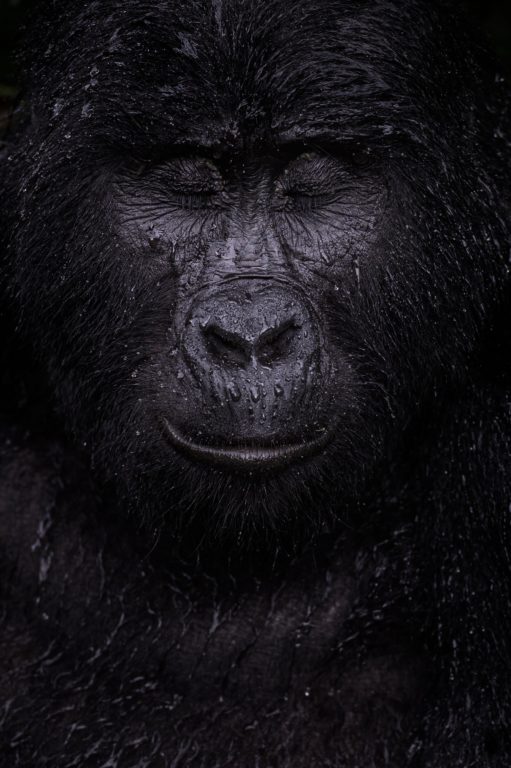
Winner, animal portraits. Reflection, by Majed Ali, Kuwait Ali trekked for four hours to meet Kibande, an almost 40-year-old mountain gorilla. ‘The more we climbed, the hotter and more humid it got,’ he recalls. As cooling rain began to fall, Kibande remained in the open, seeming to enjoy the shower.
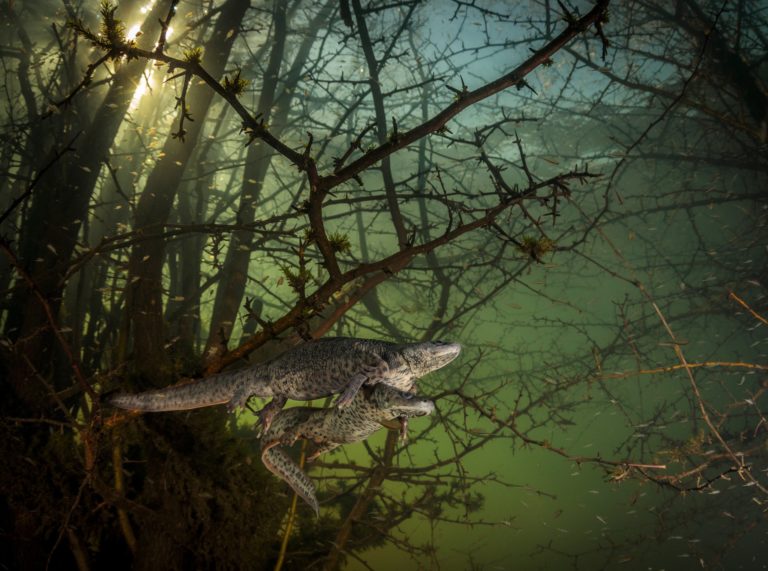
fishing spider. Winner, behaviour: amphibians and reptiles Where the giant newts breed, by João Rodrigues, Portugal Rodrigues is surprised by a pair of courting sharp-ribbed salamanders. It was his first chance in five years to dive in this lake, as it emerges only in winters of exceptionally heavy rainfall.
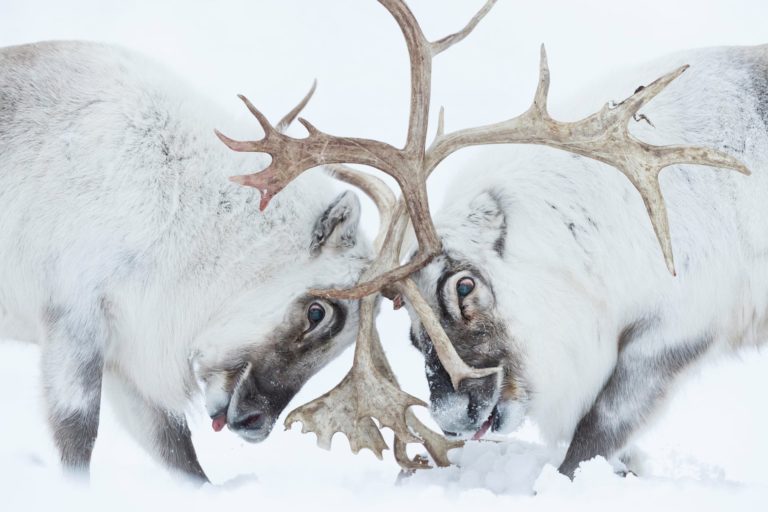
Winner, behaviour: mammals. Head to head, by Stefano Unterthiner, Italy Two Svalbard reindeer fight for control of a harem. Watching the battle, Unterthiner felt immersed in ‘the smell, the noise, the fatigue and the pain’. The reindeer clashed antlers until the dominant male, left, chased its rival away, securing the opportunity to breed.
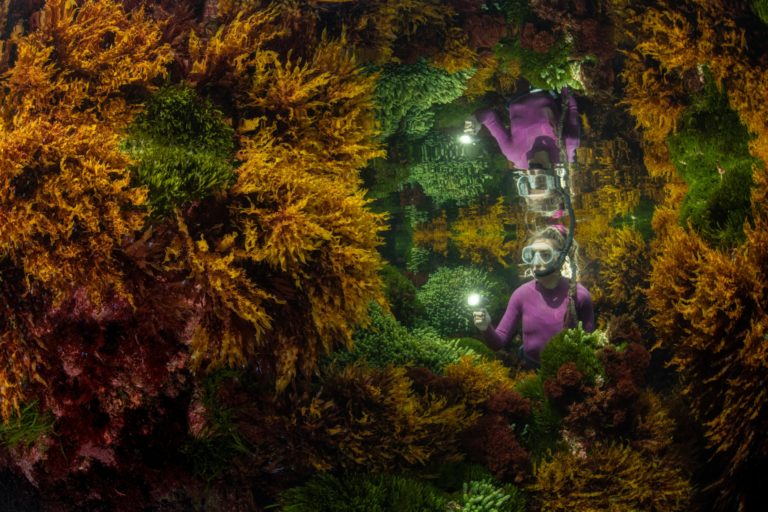
Winner, plants and fungi. Rich reflections, by Justin Gilligan, Australia A marine ranger is reflected among the seaweed. At the world’s southern-most tropical reef, Gilligan wanted to show how careful human management helps preserve this vibrant seaweed jungle. With only a 40-minute window where tide conditions were right, it took three days of trial and error before he got his image.
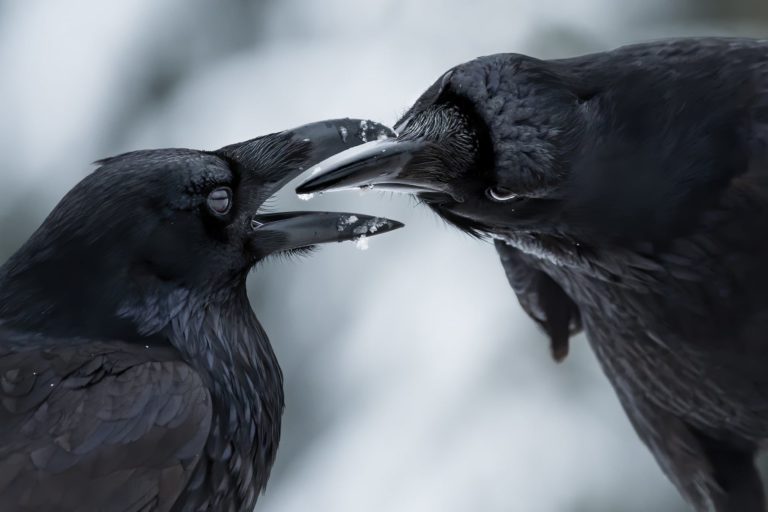
Winner, behaviour: birds. The intimate touch, by Shane Kalyn, Canada Ravens during a courtship display. It was midwinter, the start of the ravens’ breeding season. Kalyn lay on the frozen ground using the muted light to capture the detail of the ravens’ iridescent plumage against the contrasting snow to reveal this intimate moment when their thick black bills came together.
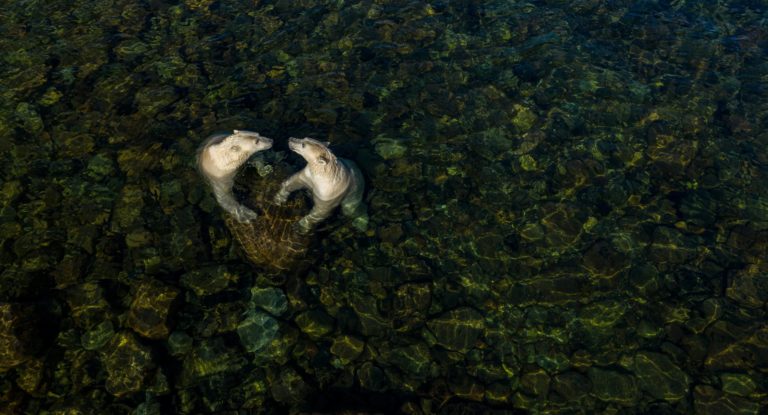
Winner, rising star portfolio award. Cool time, from land time for sea bears, by Martin Gregus, Canada/Slovakia Gregus shows polar bears in a different light as they come ashore in summer. On a hot day, two female bears cool off and play. Gregus used a drone to capture this moment.
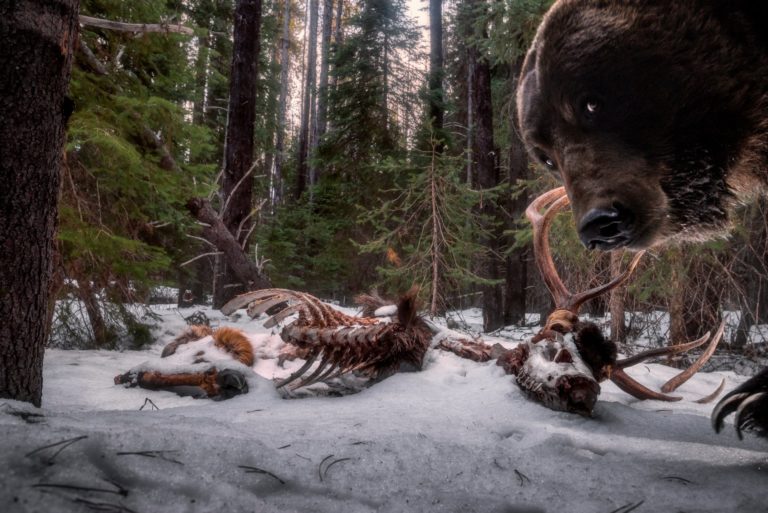
Winner, animals in their environment, Grizzly leftovers, by Zack Clothier, US. A grizzly bear takes an interest in Clothier’s camera trap. Returning to the scene was challenging. Clothier bridged gushing meltwater with fallen trees, only to find his setup trashed. This was the last frame captured on the camera.
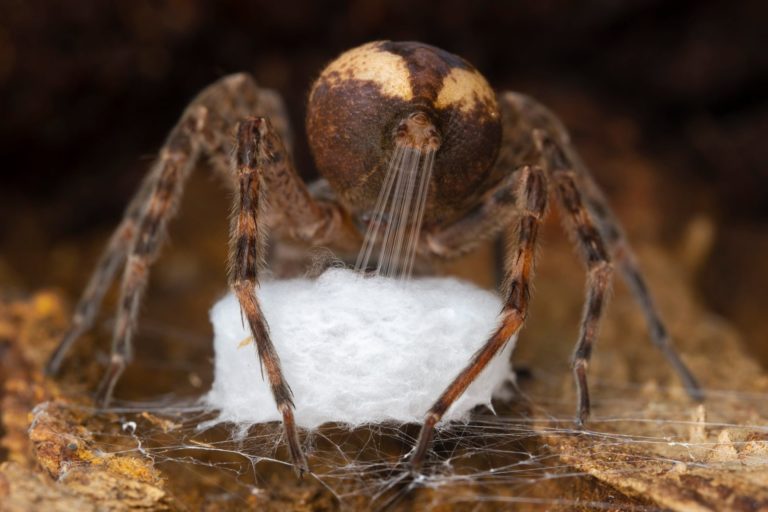
Winner, behaviour: invertebrates, Spinning the cradle, by Gil Wizen, Israel/Canada. A fishing spider stretches out silk from its spinnerets to weave into its egg sac. Wizen discovered this spider under loose bark. ‘The action of the spinnerets reminded me of the movement of human fingers when weaving,’ Wizen says.
ALSO READ,

